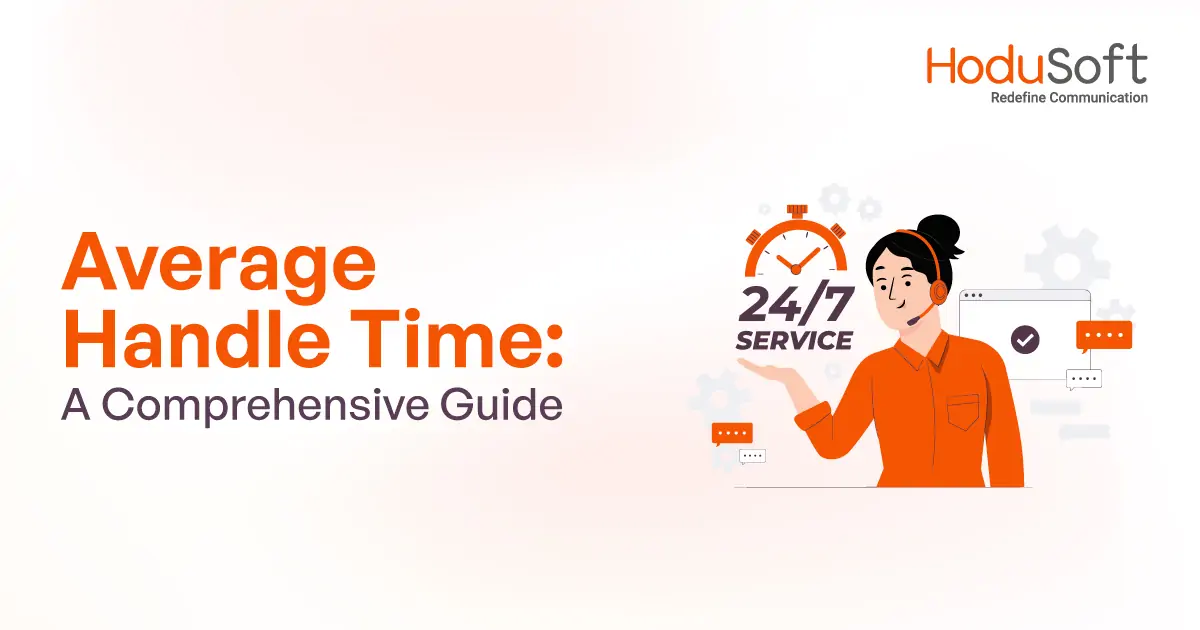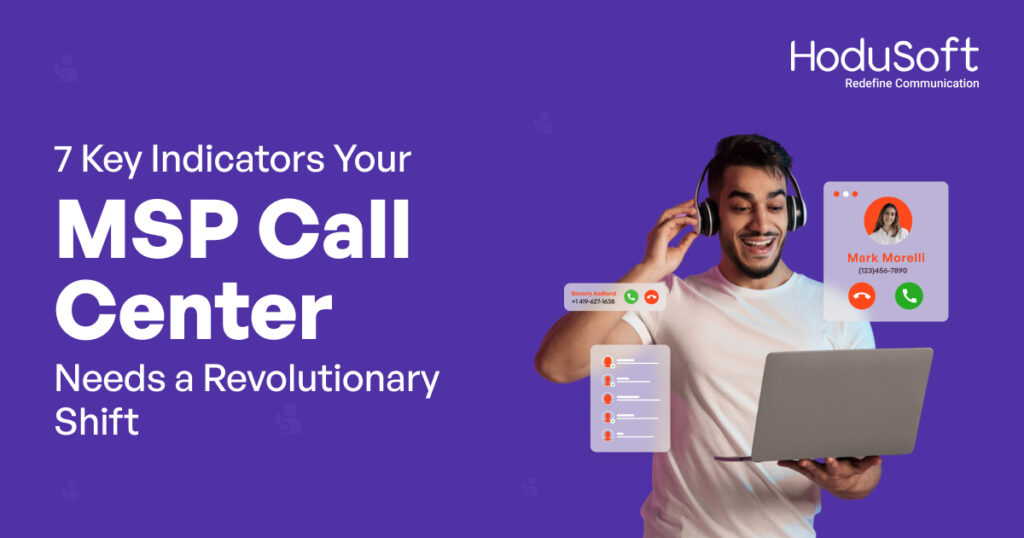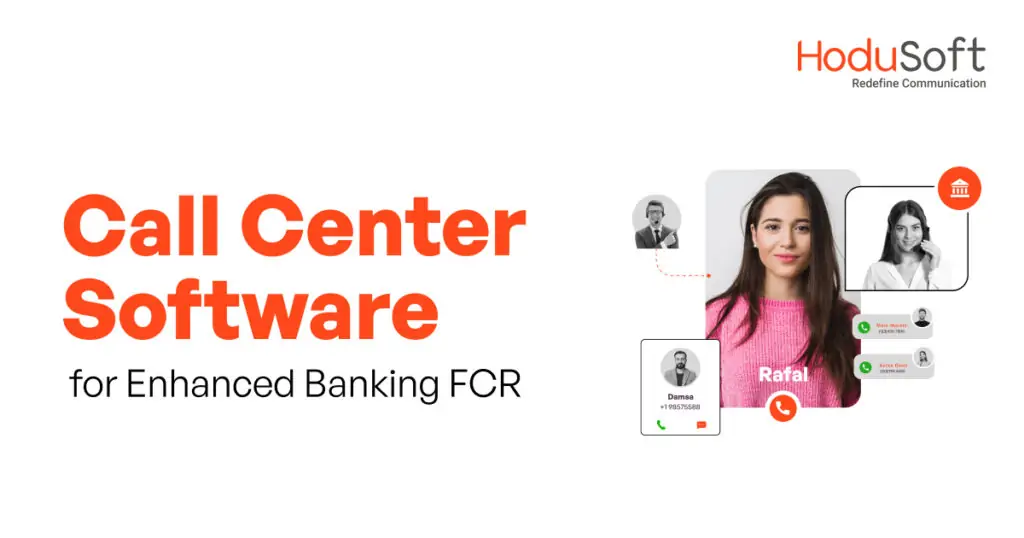Average Handle Time: A Comprehensive Guide
In the call center industry, time is a lot more valuable than money. When agents learn to make the most of their stipulated time and provide superior customer service within that, then nothing can stop money from pouring in.
When customers call your call center (or contact center), they need their issues and queries to be resolved as fast as possible. If the calls last too long then it may indicate that customers wait for a long time to get the necessary solutions to their problems, which can increase their dissatisfaction. If the calls last too short, it may indicate that agents are not giving necessary attention to customers’ problems and rushing through the call. Both scenarios are bad.
Building a good customer experience doesn’t happen by chance but by design. More than interacting with customers, agents must spend quality time on research, post-call tasks, and everything in between. It’s just like the quote by American President Abraham Lincoln, “Give me six hours to chop down a tree and I will spend the first four sharpening the axe.”
The good news is, there is a metric to find out how much time agents spend on handling customer interactions, from the moment they greet and open the call with the customer to the stage where they wrap up all after-work tasks related to the call. The term is known as ‘Average Handle Time’ and in this blog post, we will discuss it in detail.
What is Average Handle Time (AHT)?
As the name suggests, Average Handle Time (AHT) is the average time an agent takes to handle a call from start to finish. AHT consists of hold time, talk time, and post-call work. To put it lightly, imagine AHT as the ultimate test of a customer service agent’s speed, agility, and wit.
How to calculate AHT?
To calculate AHT, you need to add the total time an agent spent handling a customer call, chat, or email and then divide it by the number of customer conversations. The handling time includes the time an agent spent on talking with the customer, conducting research and looking into the transaction history, and doing any post-call tasks (such as creating a helpdesk ticket).
The formula of AHT = (total talk time + hold time + post-call tasks) ÷ Number of customer interactions
Total talk time = total duration an agent spent interacting with all customers (calls, emails, chats, etc.)
Post-call work time = the time an agent spent on post-call work after the ending of the call (for example researching, documenting, etc.)
Number of customer conversations = total number of customer interactions handled.
What’s the “standard” AHT for a call center?
AHT not only varies from industry to industry but also from one organization to another as well as from process to process. It depends on an organization’s structure, its products (or services), as well as what’s the definition of a “good” customer experience for the organization.
However, the standard AHT for a call center is typically considered to be about five to seven minutes.
As per Call Centre Magazine, the industry-standard AHT is six minutes and ten seconds.
Another report by Cornell found:
- Large businesses have an AHT of eight minutes and 48 seconds.
- The telecom sector has an AHT of eight minutes and 30 seconds.
- The retail sector has an AHT of five minutes and 24 seconds.
The AHT benchmark for financial services as well as the business and IT sector is four minutes and 45 seconds.
So, as you have seen, different call centers have different AHTs as per the industries they are in. Instead of focusing too much on AHT, focus on the impact you want to create with the desired AHT. Some of the impacts are:
- Solve customer issues quickly
- Don’t put customers on hold for too long
- Enhance customer satisfaction
Why is AHT important?
In call centers and contact centers, AHT is extremely important because it provides valuable insights into agents’ performance and how productive they are when it comes to handling customer interactions. Here are some points that highlight the importance of AHT:
Customer satisfaction:
As AHT measures the amount of time an agent spends with a customer, it can be used to determine customer service quality and enhance satisfaction. The right AHT can result in higher customer satisfaction levels.
Cost management:
By optimizing their AHT in check, call centers and contact centers can manage their costs and resources effectively and efficiently.
Agent performance:
AHT is a critical metric to evaluate agents’ performance. Longer AHT means an agent is struggling to understand customers’ pain points and shorter AHT means that an agent isn’t spending enough time to understand customers’ pain points.Efficiency and productivity:
AHT helps in determining how efficient agents are when it comes to handling customer interactions, from start to finish. It also measures agent productivity and identifies areas where improvements can be made.
Workforce planning:
Understanding the AHT can enable call centers and contact centers to determine the number of agents required to handle the workload effectively and plan their staffing accordingly.
Call routing and queuing:
By determining AHT, call centers and contact centers can optimize their call routing and queuing strategies. Also, by considering AHT, they can ensure that calls are directed to the appropriate agents or departments to minimize waiting times.
Customer experience:
When agents understand customers’ problems and give them the right service, then they can provide an excellent customer experience. Improving AHT enables them to do just that. The right AHT can play a huge role in providing an exceptional customer experience.
Improved call quality:
Determining AHT can immensely help in quality assurance endeavors. Managers and supervisors can review conversations, which are under or above the threshold of their desired AHT. After identifying the root causes (or underlying issues), which affect the AHT, they can fix them and enhance their call quality.
Continuous improvement:
Calculating AHT can help in fostering a culture of continuous improvement in customer service efficiency.
Tips to reduce AHT
If your AHT is too high, it may indicate that your agents are not efficient with their time or they don’t understand customers’ problems as they should. Here are some tips that would help you reduce your AHT:
1. Identify the underlying issue
As the saying goes, “For every effect, there is a root cause.” If you find your AHT is below the threshold, find and address the root cause instead of fixing the effect. If you try to fix the effect without addressing the root cause, then the problems will appear time and again.
The most effective way to enhance AHT is to identify the root cause of the problem. Some factors that impact AHT include:
- Dead air
- Hold-time violations
- Supervisor escalations
2. Identify agent training opportunities
After identifying the root causes, you must identify training opportunities for agents. If your agents aren’t properly trained, then they can waste customers’ time and increase the number of calls’ length. The right training can ensure that agents are well-equipped to provide customers with the right answers and speak relevant things.
Agents also must be conversant with call center software, Customer Relationship Management (CRM) systems, business communication tools, computer and headsets, helpdesk, and more. Such tools can provide agents with quick access to relevant information and streamline their workflow, reducing handling time. Agents should also be well-versed with the products (or services) they’re dealing with.
Also, use standardized call center scripts and templates for common customer queries and issues. These scripts can guide agents in providing consistent and concise responses, enabling faster resolution of customer problems.
3. Monitor agent performance
You can’t improve when you can’t measure. Monitoring and evaluation is the main thing of any organized structure. Your agents may be the best in the world, but without monitoring them regularly you won’t know what they need to improve and what they are capable of.
The best way to monitor your agents is to record calls using call recording tools and observe how agents perform during live calls. Look for patterns, common roadblocks, and opportunities to streamline the interaction process. Provide feedback to agents based on these insights and offer guidance on how to handle calls more efficiently.
Some of the key metrics for call centers include:
- Average talk time
- Average wait time
- Average time to answer
- Average hold time
- Longest wait time
- Calls declined
- Calls missed
- Abandoned in queue
- Transfers accepted
- Exceeded queue wait
4. Optimize internal communications and call routing
In call centers or contact centers, internal communication is extremely important. Agents must be able to communicate with other agents effortlessly. To ensure that, optimize your internal communication systems.
Route the calls to the right agents by using a sophisticated Interactive Voice Response (IVR) routing system, which would enable callers to choose the agents they intend to speak with.
Avoid having third-party apps as well as slow email communications. Make sure that your agents can communicate and collaborate within the workspace.
5. Streamline processes
Streamlining your process is an excellent way to diminish AHT. Streamline the processes involved in handling customer interactions. Identify any unnecessary steps or inefficiencies that could be causing delays. Simplify and optimize the workflow to eliminate bottlenecks and reduce handling time.
Monitor the activities agents are doing and eliminate those that are responsible for abnormal (undesirable) AHT. Automate all repetitive and unproductive manual tasks that don’t add any value to agents’ performance or customer conversations.
Make sure that your agents perform only those tasks that couldn’t be performed by anyone else.
6. Build an internal knowledge base
Sometimes a knowledge base can be extremely useful for improving AHT. Creating a knowledge base can enable agents to acquire all the knowledge and relevant information they need at just a click of a button.
Resources such as knowledge base and help articles can make agents familiar with the most common issues customers face as well as provide them access to a wide range of how-to guides on various issues.
Benefits of improving AHT
When it comes to enhancing AHT, it can provide a lot of benefits to call centers as well as management teams and agents. Here are some of the key benefits of enhancing AHT.
1. Decline in call abandon rates
Did you know that longer handling time can increase call abandon rates? When an agent takes more time to handle a customer, it often increases wait times for other callers.
When the wait times become unusually long then the callers tend to abandon their calls, which negatively impacts customer satisfaction score as well as the organization’s business opportunities. When call centers focus on optimizing AHT, they not only can reduce call abandon rates but also retain more customers.
2. Enhanced efficiency and productivity
A reduced AHT means agents can handle more customer interactions in a certain period and resolve customer issues at a faster rate.
This increased efficiency, which results in higher efficiency and productivity, allows call centers to handle higher call volumes and serve more customers without compromising service quality.
3. Improved customer experience
With improved AHT, customers spend less time waiting and have their issues resolved more quickly. This leads to higher customer satisfaction levels and an improved overall experience with the call center.
The right AHT provides customers with a faster and more efficient support experience.
4. Increased first-call resolution
First-call resolution (FCR) rates and AHT go hand in hand. With improved AHT, call centers can enhance their FCR. Agents have more time to listen to customers, gather relevant information, and address issues comprehensively, reducing the need for customers to call back for further assistance.
An optimized AHT allows agents to focus on resolving customer issues promptly. They can dedicate more time to understanding customer needs, providing accurate information, and delivering effective solutions, resulting in faster issue resolution.
5. Cost savings
An optimized AHT translates into cost savings for call centers. By reducing the average time spent on each call, call center operations become more efficient, which enables the organization to serve more customers with the same resources or reduce staffing requirements.
Apart from that, call centers can cut operational costs, boost profitability, and enhance their bottom line.
6. Better agent engagement and satisfaction
Agents who can handle customer interactions efficiently and resolve issues more quickly experience higher job satisfaction.
It also increases agents’ morale. Improved AHT means less time dealing with prolonged or repetitive calls, which reduces agent frustration and enables them to focus on meaningful customer interactions.
All in all,
The AHT is an extremely important metric in the call center industry. It tells how much time an average agent spends on handling a customer interaction. It is extremely simple to calculate and it gives a lot of insights into an agent’s productivity and efficiency.
If you are looking to enhance your agent’s productivity and efficiency, we at HoduSoft happen to have the tools just for you to achieve your goals. Be it call center or contact center software or SMS and email broadcast software, we have the right solutions for you. Contact our team of communication experts to get a free demo.



